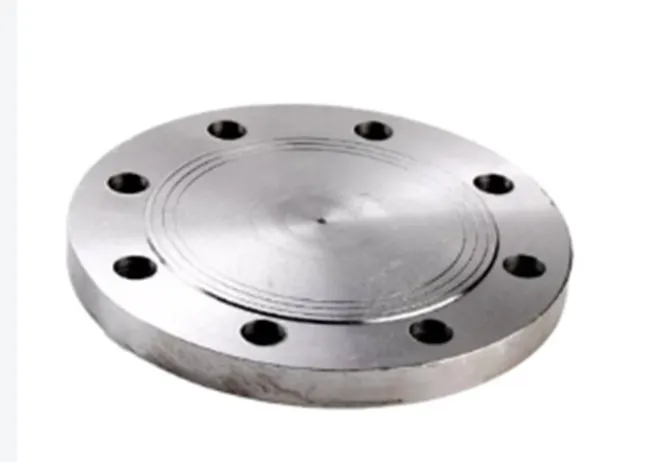-
Cangzhou Yulong Steel Co., Ltd.
-
Phone:
+86 13303177267 -
Email:
admin@ylsteelfittings.com

Oct . 13, 2024 10:56 Back to list
Connection Design for Pipe Floor Flanges in Industrial Applications
Understanding Pipe Floor Flanges Essential Components in Pipe Systems
In the realm of industrial piping, pipe floor flanges represent a crucial component used for securing pipes and ensuring that the systems operate efficiently and safely. These flanges, typically made from durable materials like stainless steel, carbon steel, or plastic, serve as integral parts of the piping infrastructure, providing stability, alignment, and leak prevention within various setups.
What is a Pipe Floor Flange?
A pipe floor flange is a flat piece of metal or plastic, often featuring a hole in the center for pipe connection. The primary function of these flanges is to bolt piping systems to a horizontal surface, such as a floor or concrete slab, augmenting the overall structural integrity of the piping installation. By providing a solid anchoring point, floor flanges help prevent movement or disconnections that could lead to leaks or other hazardous situations.
Types of Pipe Floor Flanges
There are several types of pipe floor flanges, each designed for specific applications and environments. The most common types include
1. Slip-On Flange This type is designed to slide over the pipe's end and then be welded in place. It is easy to install and is often less expensive, making it a popular choice for many applications.
2. Weld Neck Flange These flanges have a tapered hub and are welded to the pipe. They are preferred for high-pressure applications due to their strength and ability to handle extreme conditions.
3. Blind Flange A blind flange is a solid disc that covers the end of a pipe or fitting. It is used to seal off sections of a piping system, allowing for maintenance or inspection without disrupting the entire system.
4. Threaded Flange Featuring internal threads, these flanges screw onto the threaded end of a pipe. While easy to install, they are less common for floor applications due to potential leakage concerns.
Each type of flange offers distinct advantages depending on the specific needs of the system, including pressure, temperature, and the type of media being transported.
Installation Considerations
pipe floor flange

Proper installation of pipe floor flanges is critical to ensure their effectiveness. Here are some essential aspects to consider
- Alignment Pipes must be properly aligned with the flange before bolting to prevent undue stress, which may lead to fatigue and failure over time.
- Material Compatibility The material of the flange should be compatible with that of the pipe to avoid issues like corrosion or material degeneration, particularly in applications dealing with corrosive substances.
- Seal and Gasket When installing flanges, using the appropriate gasket is vital to ensure a leak-proof seal. The choice of gasket material should depend on the fluid being handled.
- Torque Specifications Proper torque specifications for the bolts must be followed. Over-tightening can lead to flange warping, while under-tightening can result in leaks.
Applications of Pipe Floor Flanges
Pipe floor flanges are utilized across a plethora of industries, including oil and gas, water treatment, chemical processing, and HVAC systems. Their ability to provide sturdy connections in high-pressure environments makes them essential in industrial applications. They also play a role in residential plumbing systems, contributing to the overall reliability of water supply and drainage systems.
Maintenance and Inspection
Regular maintenance and inspection of pipe floor flanges are necessary to ensure their longevity and performance. This includes checking for signs of wear, corrosion, or leaks. By addressing issues early, operations can avoid potential failures that could lead to costly repairs and downtime.
Conclusion
Pipe floor flanges are indispensable components in the infrastructure of piping systems. Their various types and importance in securing pipes to floors ensure the smooth operation of numerous industrial and residential applications. Understanding the characteristics and maintenance of these flanges ultimately enhances safety, reliability, and efficiency in fluid transport systems. As technologies evolve and industries grow, the significance of these flanges will continue to be central to effective pipe management.
Latest news
-
ANSI 150P SS304 SO FLANGE
NewsFeb.14,2025
-
ASTM A333GR6 STEEL PIPE
NewsJan.20,2025
-
ANSI B16.5 WELDING NECK FLANGE
NewsJan.15,2026
-
ANSI B16.5 SLIP-ON FLANGE
NewsApr.19,2024
-
DIN86044 PLATE FLANGE
NewsApr.19,2024
-
DIN2527 BLIND FLANGE
NewsApr.12,2024
-
JIS B2311 Butt-Welding Fittings LR/SR 45°/90° /180°Seamless/Weld
NewsApr.23,2024
-
DIN2605-2617 Butt-Welding Fittings LR/SR 45°/90°/180° Seamless/Weld
NewsApr.23,2024











